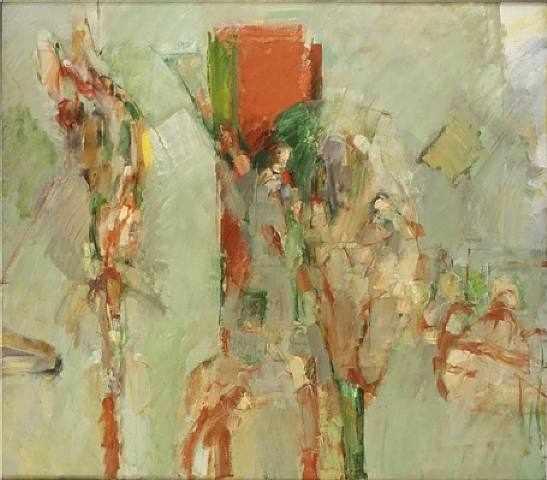Tomorrow marks the centenary of the birth of the English painter Robert Medley. Medley, who lived to the ripe age of ninety-five, is something of a forgotten figure, although that may be about to change. Plans are afoot for a retrospective of his work at the Royal Academy; meanwhile, James Hyman Fine Art in London is currently showing a selection of his paintings, principally from the early 1960s, in a small exhibition intended to celebrate what would have been the painter’s hundredth birthday.
Medley was a distinguished and sympathetic teacher – the catalogue to the present exhibition contains a number of tributes from those whom he taught, including David Hockney and R.B. Kitaj – as well as a highly regarded artist in his own right. He has faded from view, unlike a number of English painters with whom he was once frequently compared, such as Peter Lanyon and Terry Frost, largely perhaps because no dealer or gallery has, until now, represented his estate. But on the evidence of the work assembled by James Hyman, would-be reviver of his reputation, Medley is a painter worth rediscovering.
He was born in London in 1905 and educated at Gresham’s school in Norfolk, where he presciently encouraged his fellow pupil W.H. Auden to write poetry. The pair remained lifelong friends. Medley subsequently went on to study fine art, first at the Byam Shaw School of Art and then at the Slade, under Henry Tonks, whose teaching he found uncongenial. He later claimed that his real education in painting came from conversations with Roger Fry and from first-hand experience of the work of Cezanne, Matisse and Bonnard. Like his close contemporary Francis Bacon, he spent much time in Paris in the 1920s and 1930s; and like Bacon, he was a relatively late developer. Unsure of...

Robert Medley, a centenary celebration at James Hyman Fine Art 2005
18-12-2005

